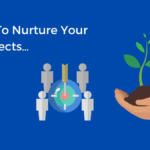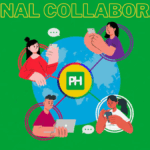Introduction
In a world where products and prices are often similar across businesses, customer service becomes a critical differentiator. But not just any customer service—personalized customer service that makes customers feel understood, valued, and prioritized. Personalization in service goes beyond simply using a customer’s name; it involves creating meaningful and memorable experiences tailored to their specific needs and preferences.
When executed correctly, personalized service not only improves customer satisfaction but also boosts retention, loyalty, and word-of-mouth referrals. This article explores strategies to deliver standout, personalized customer service that can transform casual buyers into lifelong brand advocates.
1. Know Your Customers
The foundation of personalized service is a deep understanding of your customers. To serve them well, you must first collect and analyze information about their preferences, history, and behavior.
Tips for Understanding Customers:
- Track previous purchases, inquiries, and interactions
- Use feedback and surveys to gather insights
- Monitor behavior on digital platforms (e.g., browsing habits, downloads)
- Note personal preferences or special occasions (birthdays, anniversaries, etc.)
This data allows you to anticipate needs and tailor interactions accordingly.
2. Address Customers by Name and With Context
Using a customer’s name is a basic yet powerful way to show attentiveness. But going further by acknowledging their history or previous conversations creates a much more compelling experience.
Example:
Instead of saying, “How can I help you today?”, try “Hi Alex, I see you reached out last week about an issue with your order. Let’s make sure we get that resolved.”
This shows the customer that they are not just a ticket number—they are remembered and valued.
3. Offer Tailored Solutions
Generic answers rarely satisfy customers. Personalized service means solving problems and offering solutions that are specific to the customer’s situation.
How to Personalize Solutions:
- Recommend products or services based on their history
- Adjust communication methods based on their preferences (phone, email, chat)
- Provide flexible policies or support when appropriate (e.g., extensions, discounts)
Tailored service feels thoughtful and empathetic—qualities that build trust.
4. Train and Empower Your Team
Personalized service requires human empathy and discretion. Equip your team with the knowledge, training, and authority to make decisions that improve the customer experience.
Best Practices:
- Train staff on emotional intelligence and active listening
- Encourage them to take ownership of customer issues
- Allow flexibility to resolve problems creatively
Empowered staff can respond in ways that make customers feel truly cared for.
5. Leverage Technology Wisely
Technology can enhance personalization when used correctly. From customer databases to AI-powered suggestions, smart tools help deliver relevant and timely service.
Useful Technologies for Personalization:
- Customer relationship management (CRM) systems
- Automated email responses with custom variables
- Chatbots with memory of past interactions
- Recommendation engines based on purchase behavior
Ensure technology complements—not replaces—the human touch.
6. Be Proactive, Not Reactive
Personalized service often means reaching out before the customer even asks. Anticipating needs or following up shows initiative and a genuine interest in their satisfaction.
Ways to Be Proactive:
- Send follow-up messages after a purchase or service
- Alert them to upcoming needs (e.g., subscription renewals)
- Notify them of new offers based on past interests
Proactivity reduces friction and enhances the customer’s perception of your attentiveness.
7. Create Emotional Connections
Customers are more loyal to businesses they have an emotional connection with. Personalized service builds these connections by showing customers that they matter beyond the transaction.
How to Create Emotional Bonds:
- Celebrate milestones (e.g., anniversaries, achievements)
- Show empathy during difficult situations
- Go the extra mile unexpectedly
A kind gesture or personal note can have a bigger impact than any discount.
8. Measure and Improve the Experience
Even the most personalized service needs evaluation. Regularly monitor performance and seek customer feedback to refine your approach.
Key Metrics to Track:
- Customer satisfaction scores (CSAT)
- Net promoter score (NPS)
- Customer retention rate
- First-contact resolution
- Time to resolution
Use these insights to adjust strategies and train teams accordingly.
Conclusion
In an increasingly competitive market, personalization isn’t just a luxury—it’s an expectation. Delivering personalized customer service means knowing your customers, respecting their individual needs, and providing support that’s timely, empathetic, and relevant.
When businesses invest in creating thoughtful, human-centered experiences, they don’t just meet expectations—they exceed them. The result? Higher satisfaction, deeper loyalty, and a lasting competitive edge.
Frequently Asked Questions (FAQs)
Q1: What does personalized customer service mean?
A: It refers to tailoring customer interactions and solutions based on individual preferences, history, and needs, rather than using a one-size-fits-all approach.
Q2: Why is personalized service important?
A: Personalized service improves customer satisfaction, builds loyalty, increases retention, and often leads to higher revenue through repeat business and referrals.
Q3: How can businesses collect data for personalization?
A: Data can be collected through purchase history, surveys, user behavior on websites, support tickets, feedback forms, and communication preferences.
Q4: What are some examples of personalized service?
A: Addressing customers by name, recommending products based on past purchases, offering birthday discounts, and following up after a service interaction are all examples.
Q5: Can automation help with personalization?
A: Yes, automation tools can help deliver timely and relevant messages, segment customers, and remember past interactions. However, they should support—not replace—human interaction.



